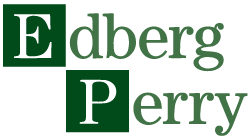You already know that a 401(k) is a very popular retirement plan that allows employees to take advantage of tax deferrals on contributions and earnings while their money accumulates for retirement. To enjoy this special status, the IRS put in place non-discrimination rules to assure that plans benefit rank and file employees and not just a company’s owners and highly compensated employees.
We know that the goal of many company owners is to maximize how much they can contribute each year to their retirement. So, to avoid uncertainty about this, many owners choose to make additional contributions for their employees in order to get a free pass on these non discrimination tests. These are called “safe harbor” contributions.
There are several matching formulas or non-elective contributions an employer can make to satisfy a safe harbor requirement. In this short chat, we’ll talk about an option the IRS introduced that does this and also encourages greater plan participation. It’s called a Qualified Automatic Contribution Arrangement or QACA for short! It’s a funny name, but it’s become a very popular Safe Harbor design because it encourages more people to save for their future. Here are five quick, but important things to know about how it works:
- Your plan must automatically enroll any eligible employee unless they choose to opt out.
- Employee deferrals start automatically at a minimum of 3% of compensation unless they change this, and this rate increases 1% each year until it reaches at least 6%.
- The plan must also include a qualified default investment for employees who don’t make an investment election on their own.
- The matching contribution formula for a QACA Safe Harbor Plan is a 100% match on the first 1% of compensation deferred and a 50% match on deferrals between 1% and 6%. [3.5% total]
- And, unlike other safe harbor options, the match can be subject to a 2-year cliff vesting schedule. That means if an employee leaves the company inside of two years, they forfeit the match back to the plan.
This plan design encourages automatic enrollment and automatic increases to put more people on a savings path and gives employers more flexibility as well.
Adopting a Safe Harbor provision can help a plan in four important ways:
- It reduces plan maintenance costs by eliminating annual non-discrimination testing requirements
- It allows highly compensated employees to maximize their deferrals
- It relieves a plan’s top-heavy status, and
- Its matching or non-elective contributions represent additional competitive benefits for employees
We encourage you to get in touch if you’d like to learn a little more about how Safe Harbor contributions can help make plans more successful.



